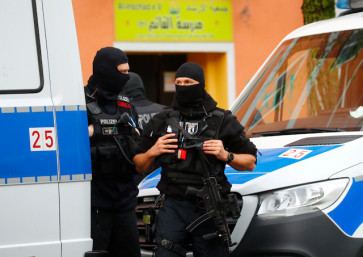Popular Reads
Top Results
Can't find what you're looking for?
View all search resultsPopular Reads
Top Results
Can't find what you're looking for?
View all search resultsMoving in the past: Museum Angkut looks at the history of transportation
Second best: Almost all modes of transportation, both traditional and modern, are presented at the Transportation Museum, some of them as replicas due to the difficulty in getting originals
Change text size
Gift Premium Articles
to Anyone
S
span class="caption">Second best: Almost all modes of transportation, both traditional and modern, are presented at the Transportation Museum, some of them as replicas due to the difficulty in getting originals.
A museum in Batu, East Java, specializes in transportation with a remarkable collection of old cars, trucks and other forms of transportation.
Museum Angkut (or Transportation Museum) features a collection of nearly any means of transportation that ever existed, traditional and modern, as well as replicas of rare vehicles.
Set up in March 2014, the 3.8-hectare museum on the slopes of Mount Panderman, Batu, East Java, houses at least 500 exhibits representing various modes of movement, including old automobiles, a helicopter and a replica of an ox-drawn cart.
'Through the collection, we can be reminded of the great inventors of transportation in the past, without whom we wouldn't have the modern vehicles of today,' said Museum Angkut operational manager Titik S. Ariyanto.
According to Titik, most of the automobiles collected at the museum are classic cars, which is different from 'old cars', since it refers to the model of a car rather than the year of manufacture.
Aside from that difference, all the museum's items have remarkable historical value. The museum's hundreds of types of cars and motorcycles used in Indonesia in the past were mostly produced between the 1930s and the 1980s and are still in working order.
The latest product at the museum is the 'wreck' of the electric car Tucuxi, once driven by former state-owned enterprises minister Dahlan Iskan. This car had an accident during its test drive in Magetan, East Java, in 2013.
'I didn't expect to see the Tucuxi here. I thought it had been destroyed. This museum is indeed exceptional with its highly valuable exhibits,' said Rahmanto, 32, a visitor from Yogyakarta.
Old timer: The Jakarta zone brings the old Sunda Kelapa port area back to life, complete with old cars and bicycles.
The museum has about 100 bicycles of various types, ranging from racing, transportation and child bicycles to those for firefighters. Some of them are well-known brands of Britain, France and Holland, like Gazelle, Simplex, Raleigh and Fongers.
There are also the chainless Beveltech bicycles made in Japan in the 1900s. The propulsion of this type uses the shaft method with a drum brake. Museum Angkut guide Soedariono said the shaft technology was first developed in 1890 by A. Fearnhead and Walter Stillman from the US.
'It's a shaft-driven mechanism, in which a gear system connects the pedal with the rear wheel. When it's damaged, it's difficult and takes a long time to repair,' explained Soedariono.
The oldest bicycle on display is an 1860 German-made wooden bike with a very simple form, like the first two-wheel vehicle invented by Baron Karl Drais in Mannheim, Germany in 1818. It's a reconstruction with details resembling the original. The other amazing replica is a steam car from the period of James Watt.
Firefighting bicycles produced in 1950 by the Birmingham Small Arms (BSA) company in Britain draw the visitors' attention. The rest are old motorcycles manufactured by Opel, Harley-Davidson, Royal Enfield and BSA as pioneer automotive producers.
Soedariono indicated that the museum's collections had been gathered, among others, through purchases and grants and borrowed from collectors. 'Our expedition team searches for exhibits at home and abroad. The ones from collectors only require proper maintenance,' he added.
No less attractive are around 200 old cars at the museum, with America's Buick Ten Toy Tonneau being the oldest, released in 1910. It resembles a coach, much like Ford's first product. According to Museum Angkut spokesman Yokka Rhismadora, the car could still be started and driven.
Its historic automobile collection includes a Ceremonial Land Rover and Bentley Mark once used by Queen Elizabeth II in her visit to Australia in 1954. There's also a limousine for Indonesia's first president, Sukarno, a 1952 Chrysler Windsor Deluxe.
The museum divides its car collections into American, British, Italian, French and German zones, which makes visitors feel like they're on a world tour. Each zone offers its own atmosphere. In the American zone, visitors enter a Broadway area, and Ford cars of the 1970s are parked along the road known for its gangsters.
In the Italian zone, a Mafioso ambience prevails, with rows of old Fiats and Vespa scooters lining the area. The British zone boasts a replica of the Buckingham Palace and the French zone has its own Eiffel Tower.
The domestic zone presents the old town of Jakarta, like Chinatown and Sunda Kelapa port with rows of bajaj, the old type of public transportation. In front of the museum is Pasar Apung, a floating market with boats peddling all kinds of souvenirs.
Classic touch: The Transportation Museum's collection includes classic motorcycles and cars manufactured in the 1950s and 1960s.
' Photos by JP/Ganug Nugroho Adi












